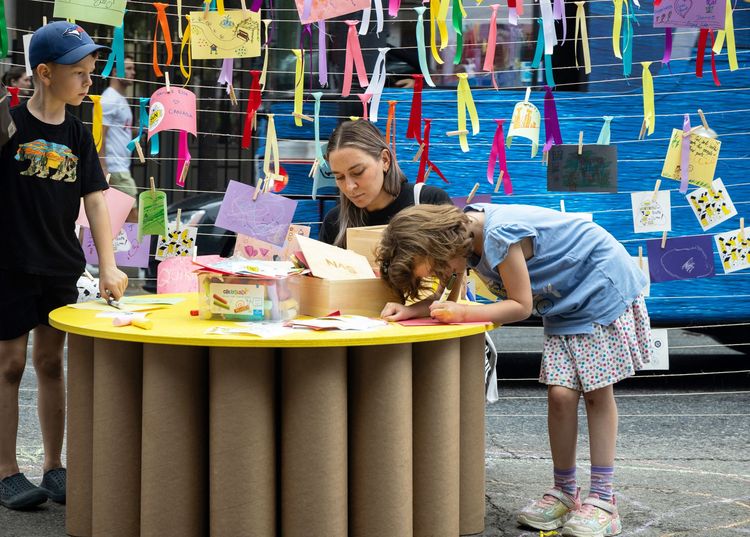
Streets Are Places For People!
Streets have the power to define the way we live together. As our largest public space by area, they can be dynamic places where community life unfolds, relationships are built, and local culture is expressed.
To achieve these goals, we need to move beyond the one-dimensional “movement only” thinking that currently dominates the design of our streets, towards a multi-dimensional and place-based set of strategies. To illustrate this potential, SvN has invited Toronto citizens and place-makers to explore five thematic installations to help them imagine the many opportunities for our city’s streets.
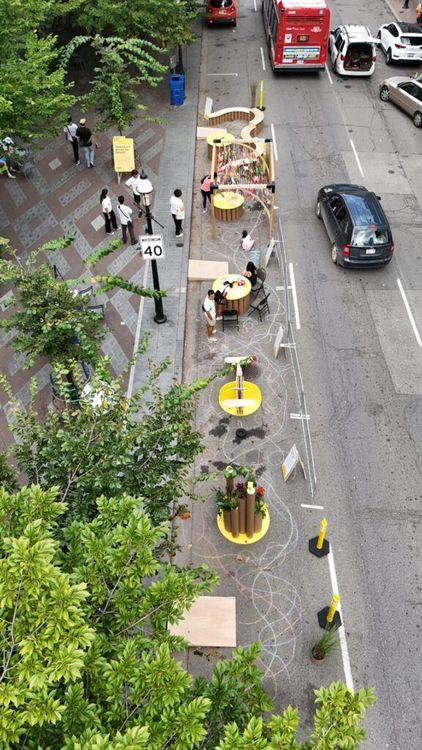
Our streets are social
Our streets bring us together
Our streets build vibrant communities
Our streets are playful
Our streets are filled with life
Our Streets Are Social
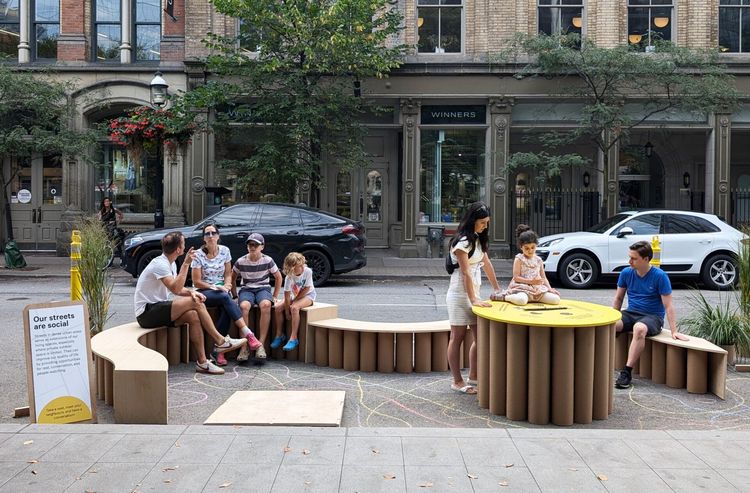
Streets are where we meet our neighbours. When paired together with outdoor seating, they create opportunities for connection and social exchange among diverse age ranges and cultural groups. This inclusiveness can promote community cohesion and good mental health.
Streets in dense urban areas can also serve as extensions of our living spaces, especially where private outdoor space is limited. They can improve our quality of life by providing opportunities for rest, conversation, and people-watching.
This installation invited people to take a seat, meet their neighbours, and have a conversation!
Strategies
- Create a distributed network of communal areas and meeting places throughout each neighbourhood.
- Provide regular seating along all streets.
- Encourage expansion of public indoor social areas out into the street.
- Allow adaptable margins on buildings and edge spaces on streets that residents can design themselves.
Our Streets Bring Us Together
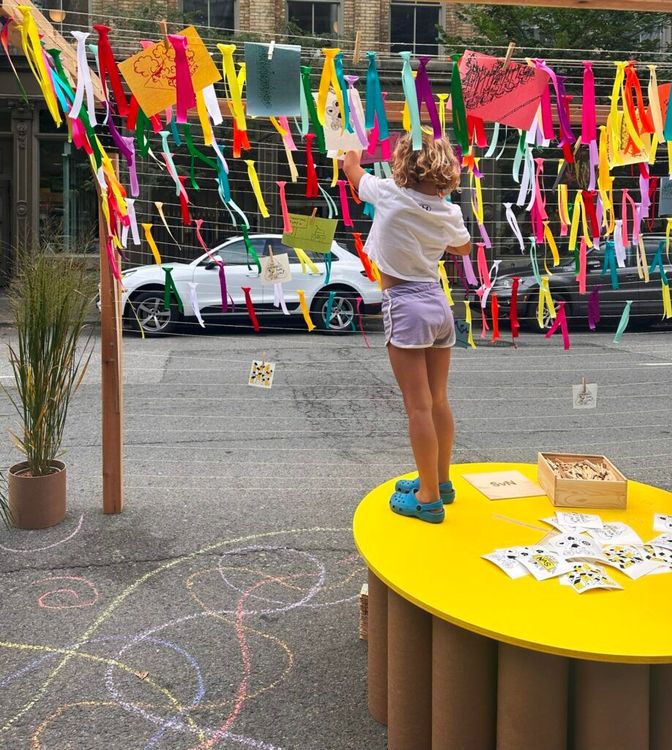
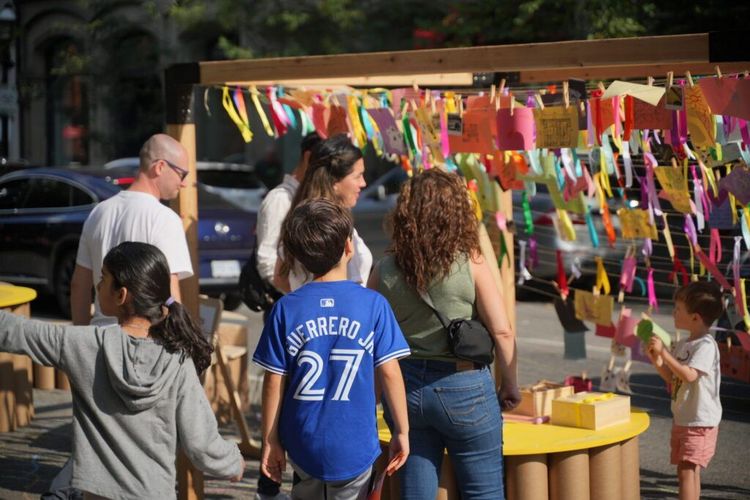
Streets connect us as a society, allowing us to work with each other toward a Common Good. For instance, well-designed streets can provide adaptability and resilience, addressing challenges such as social isolation, public health, economic development, and climate change by encouraging collective support and action in times of crisis.
Streets are also one of the few truly public spaces in cities, accessible to all regardless of socioeconomic status. If designed as interconnected places, they become social “infrastructure”, able to provide equal opportunities for participation in public life.
This installation invited people to contribute to a collective art installation: a shade canopy that became more effective as each person shared their thoughts about the importance of the streets in their neighbourhood.
Strategies
- Include residents in street design to encourage place-based uses.
- Acknowledge and protect significant historic and cultural landmarks that add to community identity.
- Facilitate street-based civic events such as markets, cultural celebrations, and political actions.
- Create networks of trees on all streets to provide summer shade. Reduce paving and increase planting to encourage stormwater infiltration.
Our Streets Build Vibrant Communities
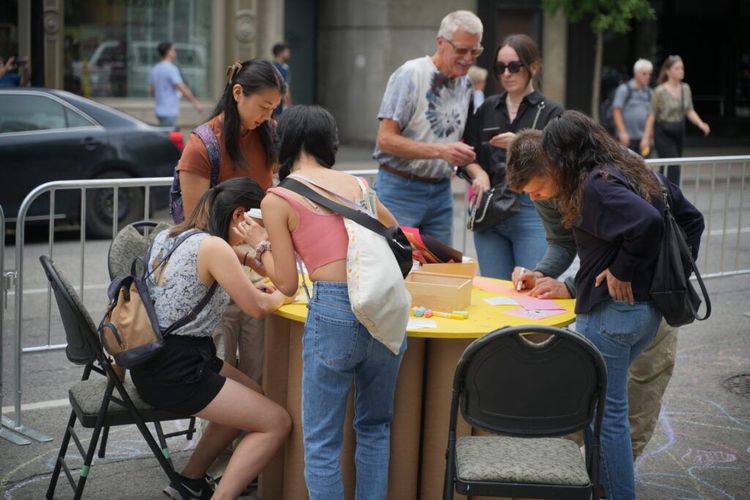
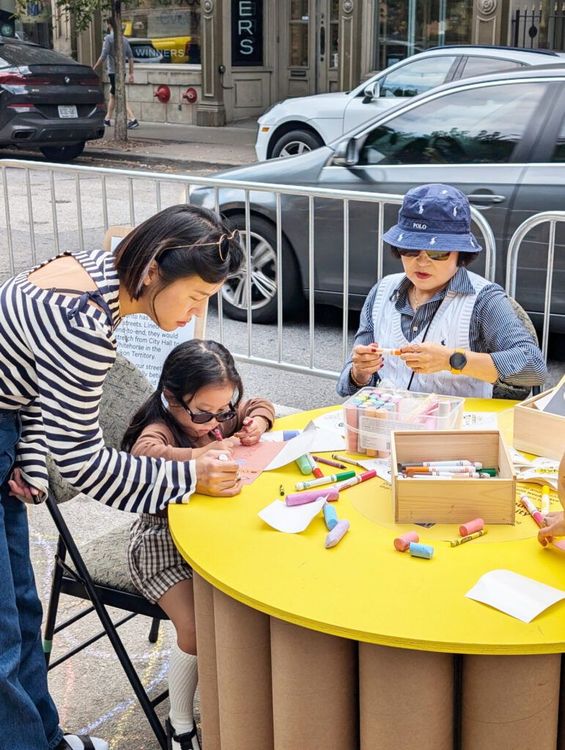
As a shared space, streets can enhance our connection to the people that live around us. By incorporating diverse elements such as activities, events, and economic activity, they can create dynamic public spaces that encourage regular use by all community members. This can lead to chance encounters or shared experiences that form stronger bonds between people, boost local economy, and celebrate local culture.
This installation invited residents to share their vision of how the streets in your neighbourhood can help make your community a more livable, sustainable, and thriving place.
Did you know that Toronto has approximately 5600 km of streets. If you lined these up end-to-end, they would stretch from Toronto City Hall all the way to Whitehorse in the Yukon Territory. If we took all of the street space in Toronto and divided it equally between all citizens, each person would have 54m2 – the size of the entire display you see here today.
What would you do with your 54m² to improve your community?
Strategies
- Create networks of practical and cultural destinations throughout neighbourhoods to encourage street use.
- Allow restaurants and bars to occupy street space for outdoor patios.
- Promote small-scale neighbourhood place-making projects such as community gardens.
- Provide venues for community events at a variety of scales.
Our Streets Are Playful
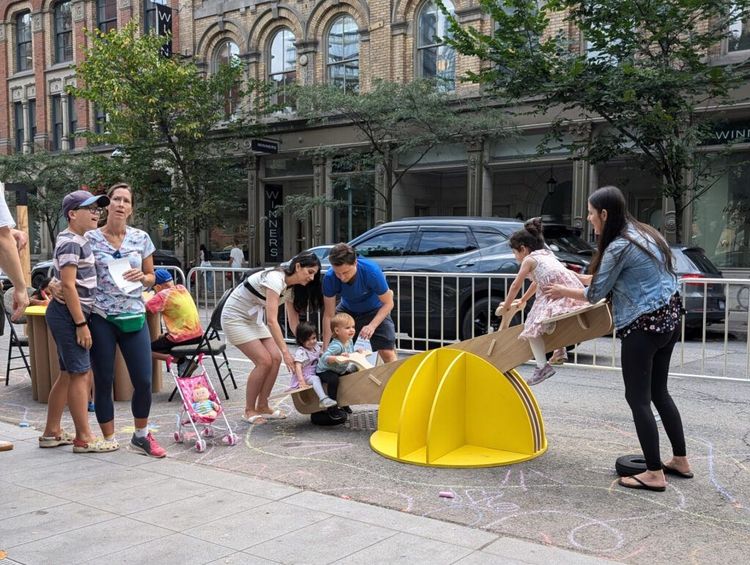
Streets are places to enjoy. Before parks and playgrounds, most urban outdoor activities occurred in streets. When designed with “play” in mind, streets have the flexibility to encourage walking, cycling, games, exercise and many other physical activities. This in turn provides opportunities for intergenerational engagement, allowing streets to significantly contribute to physical and mental health while fostering community cohesion.
By making walking and cycling more attractive options, streets can also support sustainable urban living, reducing car dependency and its associated environmental impacts, promoting health for both people and the Earth.
This installation invited people to play!
Strategies
- Design our streets for all ages, helping to ensure an accessible, safe, and inviting public realm throughout the city.
- Encourage accessibility by providing continuous (level) pedestrian crossings at intersections, frequent street crossings, and avoiding curb cuts that impact sidewalk elevation.
- Encourage walkability and cycling on all streets by providing obstacle-free routes of sufficient width. On primary routes to major destinations, provide a variety of adjacent amenity, green, and social places.
- Create a robust network of formal and informal places for play and exercise.
Our Streets Are Filled With Life
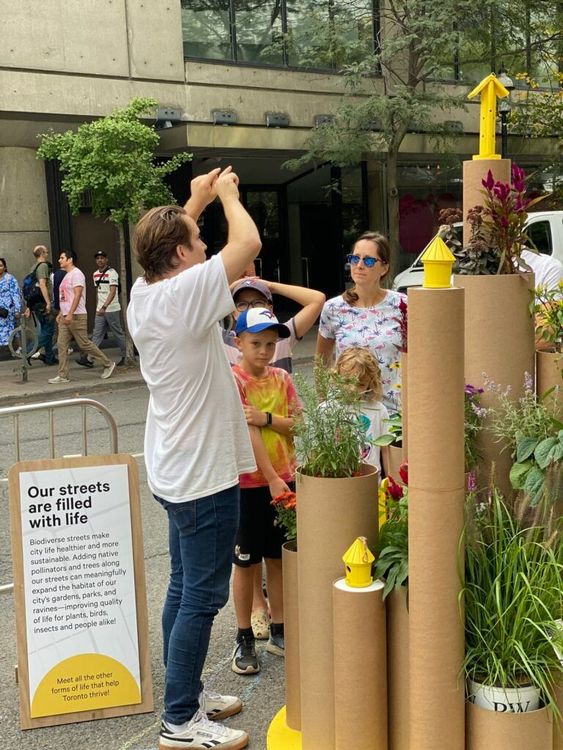
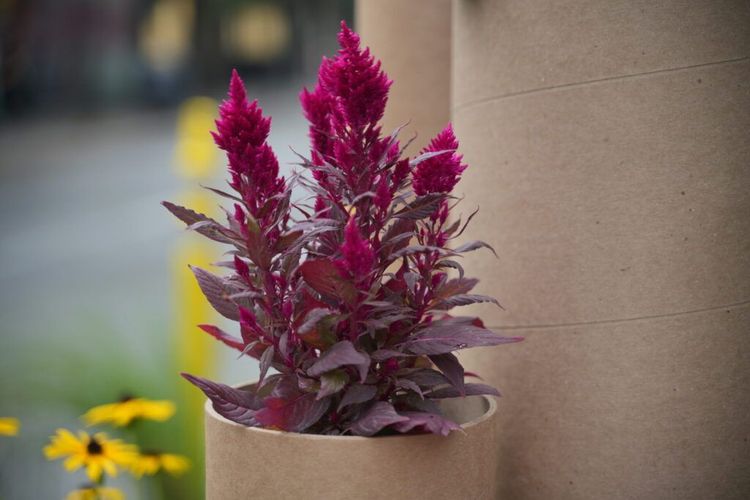
Nature is incredibly important for our cities. Biodiverse street networks make city life healthier and more sustainable for people, plants, insects, and birds alike. Adding native pollinators and trees along our streets can meaningfully expand the habitat of our city’ gardens, parks and ravines, creating a biodiverse urban ecosystem throughout the city.
Ecological street networks can also enhance our mental health, encourage outdoor activity, and provide “ecosystem services” that make our urban environment more resilient and sustainable, improving life for all our city’s residents.
This installation invited people to meet all the other forms of life that help Toronto thrive!
Strategies
- Work with ecologists to find local solutions to enhance urban-scale biodiversity networks.
- Prioritize pollinator habitat creation using native + drought-tolerant plant species in all public places.
- Plant native vegetation in any street space not required for movement or activity. Provide trees along all streets; prioritize native species that provide food sources and habitat for local flora and fauna.
- Encourage residents to plant gardens and provide bird, bat, and bug houses along residential facades, even on large apartment buildings.